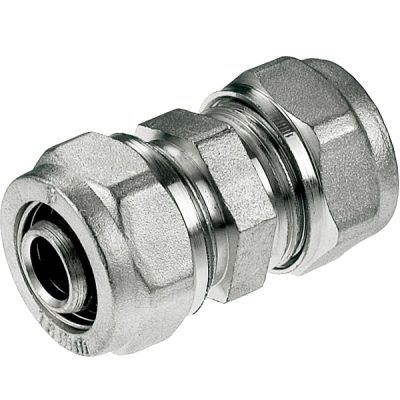PEX tubing has become a popular choice for plumbing applications due to its flexibility, durability, and ease of installation. One common question among homeowners and plumbers is whether compression fittings can be used with PEX.
In this post, we’ll provide insights into the compatibility of compression fittings with PEX and offer practical advice for your plumbing projects.
What is PEX?
PEX, or cross-linked polyethylene, is a type of plastic tubing widely used in plumbing systems. Compared to conventional materials like copper or PVC, it has a number of benefits, such as:
➡️ Flexibility: PEX tubing is highly flexible, making it easier to navigate around obstacles and install in tight spaces.
➡️ Affordability: PEX is generally more cost-effective than copper or PVC.
➡️ Durability: PEX is resistant to corrosion, chemicals, and freezing, ensuring a long lifespan.
➡️ Resistance to Freezing: PEX can withstand freezing temperatures without bursting, making it ideal for colder climates.
➡️ Ease of Installation: PEX is relatively easy to install, often requiring fewer tools and less labor than traditional materials.
Compression Fittings: What Are They?
Compression fittings are a type of plumbing connector that uses a nut and ferrule to create a secure seal between pipes. The components of a compression fitting include:
➡️ Nut: A threaded nut that is tightened to create pressure on the ferrule.
➡️ Ferrule: A metal ring that fits between the pipe and the fitting body.
➡️ Fitting Body: The main part of the fitting that connects to the pipes.
Compatibility of Compression Fittings with PEX
While it’s possible to use compression fittings with PEX, there are some important considerations:
➡️ PEX is softer and more flexible than copper or steel, which can affect the way the compression fitting interacts with the tubing.
➡️ Compression fittings are generally more suitable for low-pressure applications or temporary fixes.
➡️ When using compression fittings with PEX, it’s essential to use transition fittings to ensure compatibility between the two materials.
Pros and Cons of Using Compression Fittings on PEX
Pros:
➡️ Easy installation: Compression fittings can be installed without specialized tools like crimping or expansion tools.
➡️ Reusable: They can be easily disconnected and reused.
➡️ No need for soldering or glue: This makes them a convenient option for DIY projects.
Cons:
➡️ Potential for leaks: If not installed correctly, compression fittings can develop leaks.
➡️ Less secure than PEX-specific fittings: Crimp or push-to-connect fittings are generally considered more secure and reliable for PEX.
➡️ Higher risk of damage to PEX tubing: The softer nature of PEX can increase the risk of damage over time when using compression fittings.
The Best Ways to Install PEX Compression Fittings
➡️ Prepare the PEX tubing: Cut the tubing cleanly and remove any burrs.
➡️ Insert the PEX into the fitting: Ensure the tubing is inserted all the way into the fitting body.
➡️ Tighten the nut: Tighten the nut firmly, but avoid overtightening.
➡️ Test for leaks: Run water through the connection and check for any signs of leaks.
Alternatives to Compression Fittings for PEX
➡️ Crimp fittings: These fittings use a crimping tool to create a secure connection between PEX tubing and the fitting.
➡️ Clamp (cinch) fittings: These fittings use a clamp to secure the tubing to the fitting.
➡️ Push-to-connect fittings: These fittings require no tools to install and are often referred to as “SharkBite” fittings.
➡️ Expansion fittings: These fittings use a mechanical expansion mechanism to create a secure connection between PEX tubing and the fitting.
When to Avoid Compression Fittings on PEX
➡️ High-pressure systems: Compression fittings may not be suitable for high-pressure plumbing systems.
➡️ Permanent installations: For permanent installations, it’s generally recommended to use crimp, clamp, or expansion fittings for a more secure and durable connection.
Conclusion
While compression fittings can be used with PEX, it’s important to consider the limitations and potential risks associated with this type of fitting. For permanent installations or high-pressure systems, PEX-specific fittings like crimp, clamp, or expansion fittings are generally preferred.
By following the best practices and choosing the appropriate fittings for your specific needs, you can ensure a reliable and long-lasting plumbing system.
Post time: Sep-17-2024


